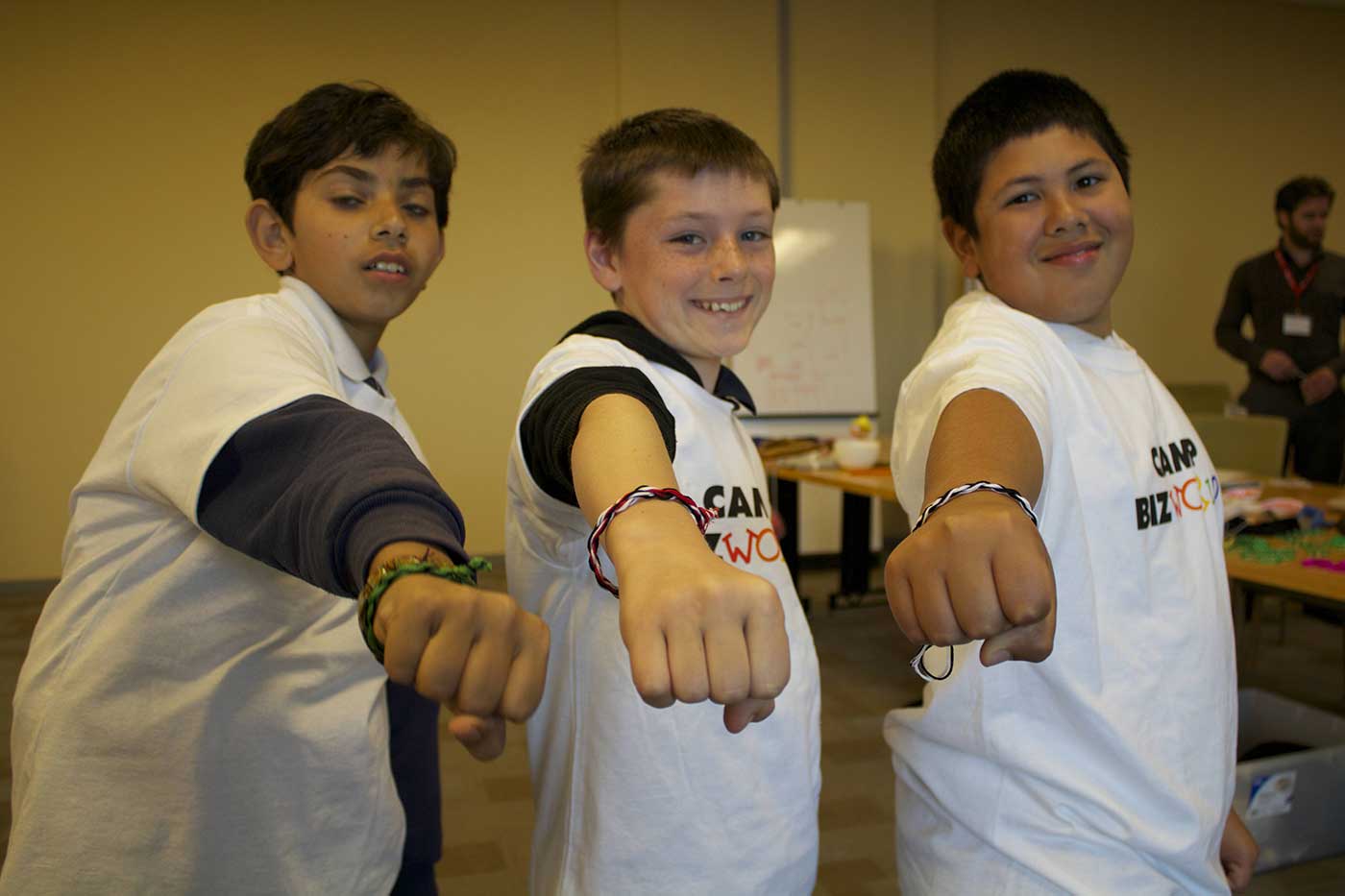April 11, 2014
Brian Page on Teaching Financial Literacy

In honor of The BizWorld Foundation's Financial Literacy 4.0 Campaign, education superhero Brian Page shared with us his tips & tools for teaching financial literacy. Read on to learn Brian's advice, strategies, and what he considers a memorable teaching moment. Thanks Brian!
Q. You have been recognized as a Money magazine and CNN Money Hero and Milken National Educator Recipient, so you’re obviously a great teacher. What advice can you give to teachers who are new to teaching financial education?
A. I have three key tips for new teachers:
1. There are a tremendous amount of resources available for us to use in the classroom. I encourage educators to find the right resources for them, and for each particular lesson. Here is a great place to start.
2. I think it’s important to remember that it is not our role to tell students what to do with their money. Our responsibility is to empower our students with the tools and resources they need to make wise and informed financial choices based on their own values and financial goals.
3. Our responsibility is to develop financially capable students. This means we need to bridge content with behavior. Gauging our success based solely on a test score is not appropriate; a more appropriate way to measure success is by the amount of students who return to school after graduation to tell us they have made wise financial choices (for example, setting up a split deposit into savings, retirement, and checking, or effectively building their credit scores). It’s responsible financial behavior we are seeking, not just scores on a bubble test.

Brian, as photographed for his contribution to CNN Money.
Q. For teachers who do not teach only financial education (i.e., elementary school teachers), how do you recommend they fit finance lessons in with their current curriculum?
A. I was very fortunate to be asked to be a member of the working committee for the President’s Advisory Committee on Financial Capability. Our committee selected from existing websites, texts, news reports, and research straightforward and practical information plainly presented in an age-appropriate manner that English teachers and Math teachers can integrate into their lessons, aligned with the Common Core State Standards. The content is being particularly written around “11 big ideas” that drive the personal finance effort.
The guiding concepts:
Compound interest, which leads to discussion of saving
Opportunity cost, which leads to smart decision making
Value of education, which leads to wise choices about finding a college and paying for it
Risk, which leads to discussion of diversification and insurance
What money is, which leads to understanding what it can and cannot buy
Time value of money, which leads to more informed purchasing, investing and planning
Cost/benefit analysis, which leads to better decision making
Setting Goals, which leads to desired outcomes
Delayed gratification, which leads to the ability to consume more in the future
Scarcity, which leads to acknowledging limitations and making choices
Inflation, which leads to discussion of how to mitigate its effects on saving and investment
My suggestion would be to visit www.moneyasyoulearn.org in the coming months to download turnkey resources that can be easily integrated into the classroom.
Q. You’re also an advocate for educational technology. What are some of your favorite tech resources and tools that support classroom lesson planning and research on financial literacy?
A. I love game based learning. Here are my 30 favorite financial education games. I particularly like using video clips to introduce topics as well. My two favorites are: Bill Cosby on Budgeting, and the Marshmallow Study.
Brian also did a wonderful article with our friends at Edutopia about his favorite games to teach financial literacy. Read all about it here.
Q. Please share a memorable moment from the classroom that illustrates the value of bringing financial education to today’s youth.
A. Anytime a student can demonstrate to me they made a wise financial choice, it’s memorable. For example, I will never stop being excited when I hear a student tell me that they set up a direct deposit at work, or they finally understood how to complete their W4, or they are actively using their mobile banking app on their phone. These are the moments that constantly confirm how teaching financial literacy can truly change lives.
Follow along with Brian on his blog, and read his first post with us here.
If you would like to bring BizWorld curriculum ( which teaches the basics of entrepreneurship, business and finance) to a classroom for only the cost of shipping, click here.
Don't forget to follow us on Twitter, and like us on Facebook!
-Your Friends at The BizWorld Foundation




